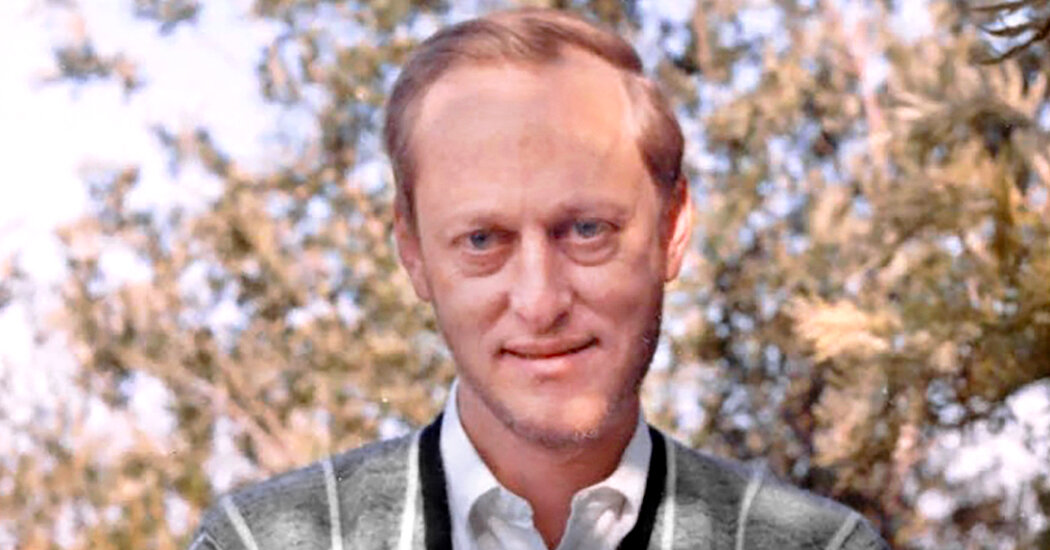Richard M. Goldstein, a pioneer in planetary exploration who used ground-penetrating radar to map planets with techniques that scientists now use to measure geographic changes on Earth, including melting glaciers, died June 22 at his home in La Cañada Flintridge, Calif. He was 97.
His daughter, Rabbi Lisa L. Goldstein, confirmed the death.
In the early 1960s, Dr. Goldstein was a doctoral student in electrical engineering at the California Institute of Technology and working part-time at NASA’s Jet Propulsion Laboratory when he proposed as a thesis topic the detection of echoes from Venus using the Goldstone Solar System Radar, which had recently been developed by the space agency.
If successful, scientists would learn the distance from Earth to Venus, essentially laying the groundwork for mapping the entire solar system. His advisor at Caltech was more than skeptical; Venus, in NASA’s descriptionwas a “cloud-shrouded” planet covered in thick gases, and previous attempts to reach the planet using other radars had yielded mixed results.
“No echo, no thesis,” Dr. Goldstein’s advisor told him, according to “Seeing the invisible: a history of planetary radar astronomy” (1996) by Andrew J. Butrica, a historian of science.
He went ahead anyway. On March 10, 1961, engineers pointed the new radar at Venus. Six and a half minutes later, the signals from Venus came back. Dr. Goldstein had proven his advisor wrong. He was soon bouncing signals back from Mercury and Mars, as well as the rings of Saturn.
The impact of the research on the solar system was enormous.
“The measurements he made of the distance to Venus made it possible to do precision navigation within the solar system,” said Charles Werner, a former senior engineer at the Jet Propulsion Laboratory. “If you know one distance, it’s like a ruler that you can use to calibrate everything else and navigate spacecraft in the solar system with precision.”
The radar echoes were the celestial precursor to a long career at the Jet Propulsion Laboratory, where he mapped the previously unseen. In the late 1960s and early 1970s, Dr. Goldstein used radar interferometry — the combining of multiple radar signals over time — to map the surface of Venus.
“High-resolution radar probes have pierced Venus’s thick clouds and for the first time resolved features on the planet’s surface that reveal a landscape of huge, shallow craters,” wrote John Noble Wilford, a science reporter, in a front-page article published in The New York Times on August 5, 1973.
“Instead of the faint shadows of earlier radar maps of the planet,” Mr. Wilford wrote, the images detected by Dr. Goldstein revealed a dozen craters, including one that was 100 miles wide and less than a quarter mile deep.
Dr. Goldstein used two radar antennas 22 kilometers apart to produce the images.
“This essentially gives us stereo reception,” says Dr. Goldstein said“and able to locate any area on Venus. We could see the depth better.”
He later adapted his radar algorithms for use in aircraft and satellites, mapping melting glaciers, the movement of tectonic plates, and other changes to the Earth’s surface.
“From a civilian terrestrial remote sensing perspective, he was absolutely the pioneer,” said Paul A. Rosen, a project scientist at the Jet Propulsion Laboratory.
Richard Morris Goldstein was born on April 11, 1927, in Indianapolis. His father, Samuel, owned the Goldstein Brothers department store. His mother, Dorothy (Drozdowitz) Goldstein, managed the household.
After graduating from Purdue in 1947 with a degree in electrical engineering, Dr. Goldstein joined the family business and worked in the lamp department.
“I have a track record of selling the most three-speed light bulbs in Indianapolis,” he joked in an oral history interview with the National Radio Astronomy Observatory.
Eleven years later, Dr. Goldstein moved to California to study and took a low-level position at the Jet Propulsion Laboratory, where he worked for 43 years, retiring as a senior scientist. (He received his doctorate from Caltech in 1963.)
“He broke every problem down to its roots,” Mr. Rosen said. “He took it easy. He wasn’t a fan of telling the world how great he was.”
Dr. Goldstein married Ruth Lowenstam in 1964. She survives him, along with their daughter Lisa; their sons Samuel and Joshua; three grandchildren; and one great-grandson. He was predeceased by his brother, Samuel Goldstein Jr., an astronomer.
During his time at the Jet Propulsion Laboratory and even after he retired, Dr. Goldstein was an enthusiastic participant in the annual Invention Challengein which contestants attempt to solve odd problems, such as creating “a device that can put up to 10 ping-pong balls into a glass jar five meters away within a time limit of one minute.”
“I would say he won at least a third of the time,” his daughter said. “He loved these competitions. He was obsessed with finding the solution.”


